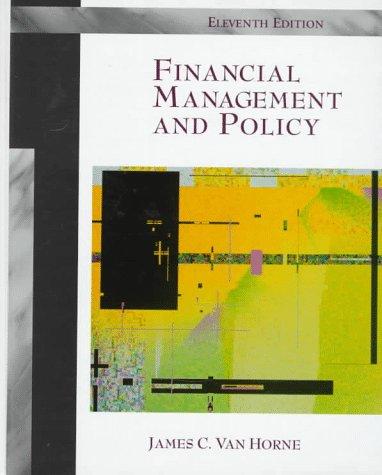Answered step by step
Verified Expert Solution
Question
1 Approved Answer
Need help with Finance Question, read it carefully and check your answer please. Thank you. You are given the following financial information about your company
Need help with Finance Question, read it carefully and check your answer please. Thank you.




You are given the following financial information about your company (which matches the exam handout): Now make the following assumptions: Sales are expected to increase by 20 percent in Year 1. Operating costs are expected to increase to 65.0 percent of sales: Fixed assets are being used at 90 percent of capacity. Fixed assets are lumpy. If the firm must add fixed assets, it must add a lump-sum of $2,000,000. Fixed assets are currently being depreciated on a straight line basis over a 10-year period. New fixed assets will also be depreciated on a straight line basis over 10 years. All current assets and spontaneous liabilities can be expressed as a percent of sales and will grow proportionately with sales Now make the following assumptions: Sales are expected to increase by 20 percent in Year 1. Operating costs are expected to increase to 65.0 percent of sales. Fixed assets are being used at 90 percent of capacity. Fixed assets are lumpy. If the firm must add fixed assets, it must add a lump-sum of $2,000,000. Fixed assets are currently being depreciated on a straight line basis over a 10-year period. New fixed assets will also be depreciated on a straight line basis over 10 years. All current assets and spontaneous liabilities can be expressed as a percent of sales and will grow proportionately with sales. At the start of the coming year, notes payable and long-term debt will not initially change. However, the notes payable account will be used to fund the AFN for the second pass. The before-tax interest rate on notes payable and long-term debt is currently 8 percent. Over the coming year it will remain at 8% for the long-term debt, but will increase to 12% for the notes payable. The tax rate will remain at 40 percent. The firm will increase its dividend payout rate from 40 percent to 50 jercent of net income in Year 1, regardless of whether any new equity is issued. Using the spreadsheet method, and given the information above, do a first pass and calculate the additional funds needed. Then, do a second pass, assuming hat AFN is handled through the notes payable (NP) account, either increasing or educing NP. Given this information, determine what the return on equity NI /Equity) is expected to be based on projections after the second pass gnoring the remaining AFN after the second Fixed assets are being used at 90 percent of capacity. Fixed assets are lumpy. If the firm must add fixed assets, it must add a lump-sum of $2,000,000. Fixed assets are currently being depreciated on a straight line basis over a 10-year period. New fixed assets will also be depreciated on a straight line basis over 10 years. All current assets and spontaneous liabilities can be expressed as a percent of sales and will grow proportionately with sales. At the start of the coming year, notes payable and long-term debt will not initially change. However, the notes payable account will be used to fund the AFN for the second pass. The before-tax interest rate on notes payable and long-term debt is currently 8 percent. Over the coming year it will remain at 8% for the long-term debt, but will increase to 12% for the notes payable. The tax rate will remain at 40 percent. The firm will increase its dividend payout rate from 40 percent to 50 percent of net income in Year 1, regardless of whether any new equity is issued. Using the spreadsheet method, and given the information above, do a first pass and calculate the additional funds needed. Then, do a second pass, assuming that AFN is handled through the notes payable (NP) account, either increasing or reducing NP. Given this information, determine what the return on equity (NI/Equity) is expected to be based on projections after the second pass (ignoring the remaining AFN after the second pass). Enter your answer in decimal format, truncated to 3 decimal places. For example, if your answer is 32.79%, enter "0.327
Step by Step Solution
There are 3 Steps involved in it
Step: 1

Get Instant Access to Expert-Tailored Solutions
See step-by-step solutions with expert insights and AI powered tools for academic success
Step: 2

Step: 3

Ace Your Homework with AI
Get the answers you need in no time with our AI-driven, step-by-step assistance
Get Started


